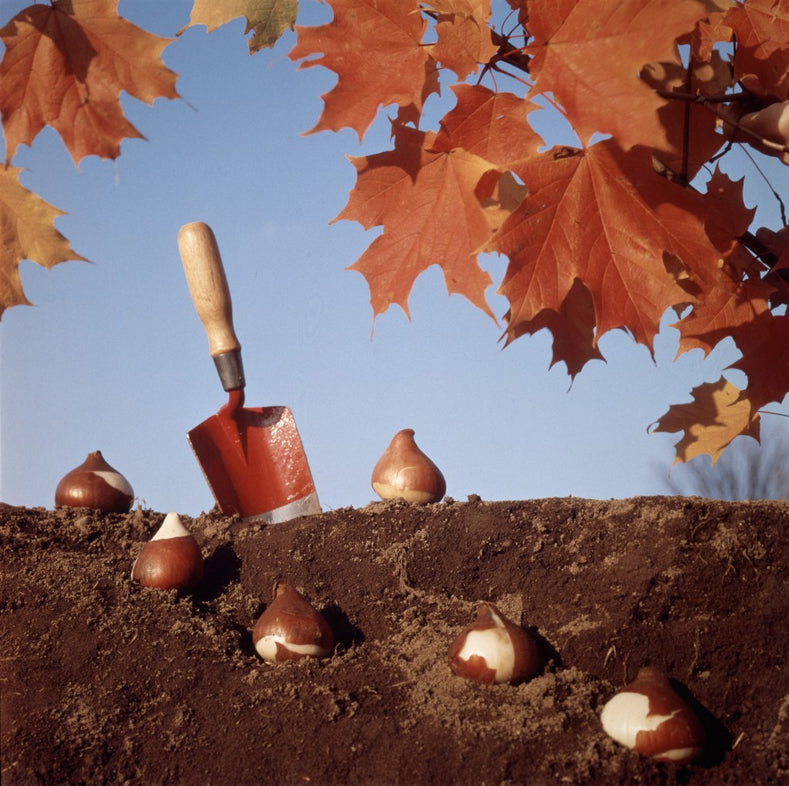Planting Time
The second most anticipated moment on the bulb calendar (the first being the start of spring) is here! It’s planting time, and we at DutchGrown can’t wait to get our hands dirty. To make sure your garden will be looking as good as (if not better than) our fields, we want to share with you the top tips that, though seemingly simple, will make all the difference between an ‘ok’ spring display and a top season full of fantastic flowers.
Plant Now or Store Well
Let’s start at the very beginning, the moment that your DutchGrown bulbs arrive. The best moment to plant them is straight away, but if for any reason you can’t get to planting just yet, the first thing you want to do is get them out of the box they came in, and take the lid of the plastic tray. After you’ve done that you can store them in a cool (but not freezing), dry and dark place. Basements and garages are ideal for this purpose.
Drainage & Sunlight
The next step is finding the perfect spot to plant them. Bulbs are very versatile and undemanding, but they still have some requirements, the most important one being drainage. If bulbs are planted in soil that doesn’t drain away moisture, their roots will rot and the flowers won’t grow to their full potential (or not at all). If you have a place in your garden where puddles tend to collect after a rainstorm, then that place is definitely out. The second thing bulbs need is light, either full sunlight or partial shade. Early bulbs do well under trees and brushes, because when they bloom the sunlight is not yet blocked by the leaves that will come in later in the season.
Depth & Distance
Once you’ve found a spot (and don’t forget lawns and containers are just as viable as beds and borders), it’s time to get digging. But how deep should the hole be? And how close together can you plant them? The formula is simple: Plant flower bulbs three times as deep as their height, three times their width apart.
Food & Drink
Although bulbs don’t necessarily need mulch, you can still make sure your soil has the best consistency possible by adding flower bulb food, such as DutchGrown Organic Flower Bulb Food™, which will increase their performance enormously. After you’ve planted your flower bulbs it’s time to water well. This helps settle the soil and gives the roots the moisture they need to start sprouting.
Unwanted Visitors
If you live in an area where deer and other pests are prevalent, they might be tempted to snack on your bulbs. There are a few things you can do to prevent them from ruining your hard work: Putting up fences, covering your beds with chicken wire, planting extra deep, making sure you clear away any tell-tale signs of bulbs having been planted, or surrounding your more tasty bulbs with varieties that critters abhor.
However and wherever you’ve decided to plant your bulbs, make sure you enjoy this time with nature. And once you’re done? How about a hot beverage (and possibly a slice of pumpkin pie)?
Just in Time
Haven’t ordered your bulbs yet? If you go to our website, there is still time to choose your favorite flower bulbs to plant this year, for a fabulous, floral start to 2020!

